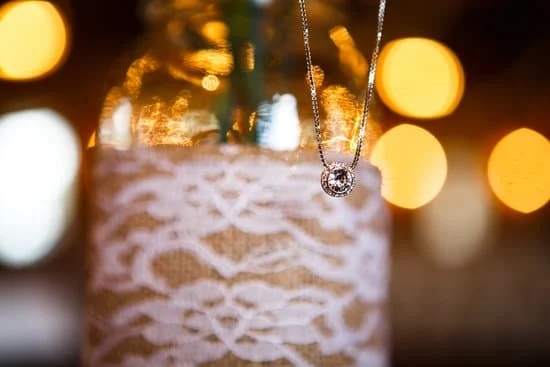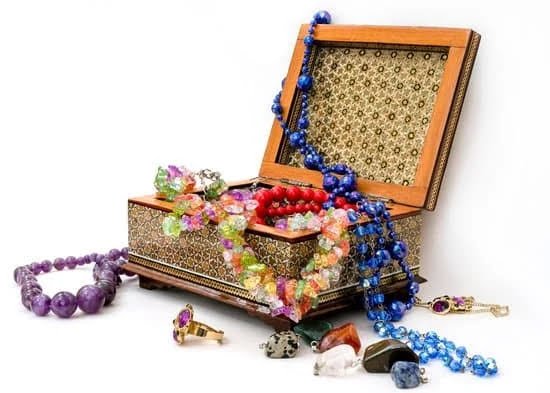The history of jewelry in America is a fascinating tale of cultural influence, craftsmanship, and innovation. From the early native American jewelry to the rise of iconic American jewelry houses like Tiffany & Co. the legacy of jewelry in America has left an indelible mark on global trends. This article will take you on a journey through time, exploring the various influences and movements that have shaped the rich tapestry of American jewelry.
Tracing back to the origins and evolution of early native American jewelry, we will uncover the cultural significance and craftsmanship that laid the foundation for American jewelry making. The colonial influence from European settlers and the impact of industrial revolution on mass production will be explored, shedding light on how these factors shaped American jewelry trends.
Additionally, we will delve into the golden age of American jewelry design during the Art Nouveau and Art Deco movements, as well as the influential role of Hollywood glamour in shaping American jewelry trends. Finally, we will also take a look at contemporary American jewelry, examining modern trends and influences that continue to shape the enduring legacy of American jewelry.
Early Native American Jewelry
The history of jewelry in America dates back centuries, with early Native American people creating intricate pieces that reflected their culture, traditions, and beliefs. These pieces were crafted using materials such as turquoise, shell, silver, and feathers, and often featured symbolic designs that held deep spiritual significance. The craftsmanship and attention to detail in these early Native American pieces laid the foundation for the rich legacy of jewelry making in America.
Native American jewelry-making techniques varied by tribe and region, with each group incorporating unique materials and methods into their work. For example, Navajo artisans became known for their exquisite silverwork, while tribes in the Pacific Northwest utilized intricate carving and engraving techniques on materials such as cedar wood and bone. These early forms of jewelry not only served as adornment but also played a significant role in ceremonial practices and storytelling within Indigenous communities.
As European settlers arrived in America, they brought with them new influences that would shape the future of American jewelry trends. The exchange of ideas and resources between Native American artisans and European colonists led to the development of distinct styles that blended traditional techniques with innovative design elements. This intersection of cultures laid the groundwork for the evolution of American jewelry making as we know it today.
| Topic | Data |
|---|---|
| Early Native American Jewelry Materials | Turquoise, shell, silver, feathers |
| Native American Artisan Techniques | Varying by tribe/region: Silverwork (Navajo), Carving/Engraving (Pacific NW) |
| Impact of European Settlers | Blending traditional techniques with innovative design elements |
Colonial Influence
The history of jewelry in America is a rich tapestry woven with diverse influences, and one of the most significant chapters in this story is the Colonial influence on American jewelry trends. As European settlers arrived on American shores, they brought with them their own traditions and craftsmanship, shaping the evolution of jewelry making in the New World.
One of the key impacts of Colonial influence on American jewelry was the introduction of new materials and techniques. European settlers brought with them precious metals such as gold and silver, as well as gemstones that were previously unavailable or unknown to Native American artisans. This influx of materials allowed for the creation of more intricate and elaborate pieces, marking a shift from the simplicity of indigenous jewelry to the more ornate styles favored by Europeans.
Moreover, Colonial influence also brought about a blending of cultural aesthetics in American jewelry making. The fusion of European design elements with indigenous motifs resulted in a distinct style that highlighted both traditional craftsmanship and new influences. This cross-cultural exchange laid the groundwork for unique American jewelry designs that reflected a diverse heritage.
The history of jewelry in America is incomplete without acknowledging the transformative impact of Colonial influence on shaping American jewelry trends. The blending of European techniques and materials with indigenous traditions paved the way for a distinctive style that continues to resonate in modern American jewelry design. This period marks a significant chapter in the evolution and development of jewelry making in America, leaving an indelible mark on its enduring legacy.
Industrial Revolution and Mass Production
During the Industrial Revolution, the jewelry industry in America experienced significant changes as a result of technological advancements and mass production techniques. This marked a shift from traditional handcrafted pieces to the production of jewelry on a larger scale, making it more accessible to a wider audience.
Technological Advancements
The Industrial Revolution brought about innovations such as the use of steam power, new metalworking techniques, and the introduction of machinery for gem cutting and polishing. These advancements streamlined the jewelry-making process, allowing for increased efficiency and productivity. As a result, jewelry production shifted from small artisan workshops to larger factories, leading to the mass production of jewelry in America.
Accessibility and Affordability
With mass production came greater accessibility and affordability of jewelry for the general population. The ability to produce larger quantities of jewelry at lower costs meant that more people could afford to purchase and wear decorative pieces. This democratization of jewelry ownership had a profound impact on American society, as it allowed individuals from various social strata to partake in the adornment of personal ornaments.
Changing Styles and Designs
The mass production of jewelry also influenced trends in design and style. As demand for affordable yet fashionable pieces grew, manufacturers began producing a wide variety of styles to cater to different tastes. This period saw the emergence of costume jewelry made from non-precious materials, as well as innovative designs that reflected contemporary aesthetics. The shift towards mass production during this time laid the groundwork for the diverse range of styles and designs seen in American jewelry today.
The history of jewelry in America is intrinsically linked to the changes brought about by the Industrial Revolution and mass production. These developments not only transformed how jewelry was produced but also had lasting effects on its accessibility, affordability, and design trends.
Art Nouveau and Art Deco Movements
The Art Nouveau and Art Deco movements marked a significant period in the history of jewelry in America, showcasing a unique blend of creativity, innovation, and distinctive styles. During the late 19th to early 20th centuries, these artistic movements revolutionized jewelry design, leaving an indelible mark on American culture and fashion.
Art Nouveau jewelry embraced nature-inspired motifs, characterized by flowing lines, vibrant colors, and intricate designs. This movement was a reaction against the mass-produced, industrialized jewelry of the time, emphasizing handcrafted pieces that showcased individuality and artistry. In America, artists such as Louis Comfort Tiffany and René Lalique played pivotal roles in popularizing Art Nouveau jewelry with their breathtaking creations.
On the other hand, the Art Deco movement emerged in the 1920s and 1930s, reflecting a shift towards bold geometric shapes, clean lines, and a modern aesthetic. American jewelers embraced this new style, incorporating sleek metals such as platinum and white gold alongside colorful gemstones like emeralds, rubies, and sapphires. The streamlined elegance of Art Deco jewelry perfectly complemented the spirit of the Roaring Twenties and remained influential throughout the Great Depression era.
These two distinct yet interconnected movements not only transformed American jewelry design but also captured the zeitgeist of their respective time periods. The legacy of Art Nouveau and Art Deco continues to influence contemporary jewelry trends, highlighting the enduring impact of these golden ages of American jewelry design on both national and global scales.
- List item 1: The intricate designs of Art Nouveau were heavily influenced by natural elements such as flowers, plants, and insects.
- List item 2: Art Deco jewelry often featured geometric patterns and vibrant colored gemstones set in contrasting metal settings.
- List item 3: The fusion of different cultural influences during this period created a diverse range of jewelry styles that continue to inspire designers today.
The Rise of American Jewelry Houses
Tiffany & Co. founded in 1837, is arguably one of the most iconic American jewelry houses with a storied history that spans over 180 years. Known for its exceptional quality, timeless designs, and commitment to craftsmanship, Tiffany & Co. has become synonymous with luxury and elegance. Similarly, Cartier’s entry into the American market in the early 20th century brought a new level of sophistication and artistry to the country’s jewelry scene, further expanding its influence on American fashion and style.
The emergence of these esteemed jewelry houses not only elevated the standards of quality and design but also played a crucial role in establishing New York City as a prominent hub for jewelry production and innovation. Their contributions have helped shape the identity of American jewelry, setting a benchmark for excellence that continues to inspire contemporary designers and artisans.
As such, it is evident that these influential establishments have left an enduring legacy that has reshaped the history of jewelry in America and beyond.
Hollywood Glamour
The history of jewelry in America has been greatly influenced by the glamour of Hollywood and the influence of movie stars. The dazzling and larger-than-life personas of actors and actresses have played a significant role in shaping American jewelry trends over the years.
Iconic Jewelry Moments on the Silver Screen
Throughout the history of American cinema, there have been iconic moments that have left a lasting impact on jewelry trends. From Elizabeth Taylor’s stunning diamond necklaces in “Cleopatra” to Audrey Hepburn’s timeless elegance adorned with pearls in “Breakfast at Tiffany’s,” these moments have set the stage for what is considered fashionable in jewelry.
Celebrity Endorsements and Designer Collaborations
The influence of movie stars on American jewelry trends goes beyond what is seen on the screen. Many celebrities have become ambassadors for luxury jewelry brands, leading to an increased demand for specific designs and styles. Additionally, collaborations between renowned jewelry designers and Hollywood A-listers have resulted in collections that reflect the glamour and sophistication associated with movie stars, further fueling trends in American jewelry.
Red Carpet Moments: Impact on Popular Culture
One cannot discuss the influence of movie stars on American jewelry without mentioning red carpet events. The Academy Awards, Golden Globes, and other high-profile award shows serve as platforms for celebrities to showcase exquisite and often extravagant jewelry pieces. These red carpet moments not only captivate audiences around the world but also contribute to shaping consumer preferences and desires when it comes to fine jewelry.
Overall, it is undeniable that Hollywood glamour has had a profound impact on American jewelry trends throughout history, solidifying its place as a driving force behind evolving styles and tastes in the realm of fine adornments.
Contemporary American Jewelry
In recent years, contemporary American jewelry has been shaped by a variety of trends and influences, reflecting the diverse cultural landscape of the United States. From minimalist designs to bold statement pieces, modern American jewelry reflects the individuality and creativity of today’s designers. Here are some key trends and influences shaping contemporary American jewelry:
- Minimalism: Many contemporary American jewelers have embraced minimalism, creating sleek and understated pieces that are perfect for everyday wear. These designs often incorporate clean lines, geometric shapes, and a focus on simplicity.
- Eco-friendly practices: With a growing emphasis on sustainability and ethical sourcing, many American jewelry designers are incorporating eco-friendly practices into their work. This includes using recycled materials, responsibly sourced gemstones, and environmentally conscious production methods.
- Cultural diversity: The United States is a melting pot of different cultures, and contemporary American jewelry reflects this diversity. Many designers draw inspiration from their own heritage or incorporate elements from various cultural traditions into their work, resulting in unique and culturally rich pieces.
- Technology: Advancements in technology have also had a significant impact on contemporary American jewelry design. From 3D printing to digital rendering, modern tools and techniques have opened up new possibilities for creating innovative and intricate pieces.
As we look at these modern trends and influences in contemporary American jewelry, it’s clear that the history of jewelry in America continues to evolve and capture the spirit of the times. From embracing sustainability to celebrating cultural diversity, today’s designers are pushing boundaries and redefining what it means to create beautiful and meaningful jewelry in the 21st century.
The history of jewelry in America serves as a rich tapestry that continues to inspire new generations of designers to push creative boundaries while honoring tradition.
Conclusion
In conclusion, the history of jewelry in America is a rich tapestry of cultural influences, artistic movements, and technological advancements that have shaped the industry into what it is today. From the early Native American jewelry to the influence of European settlers and the rise of American jewelry houses, the evolution of American jewelry reflects the country’s dynamic history and diverse cultural landscape.
The Industrial Revolution brought about mass production techniques that revolutionized the accessibility of jewelry, while the Art Nouveau and Art Deco movements showcased innovative designs and craftsmanship.
The impact of Hollywood glamour further propelled American jewelry onto the global stage, as movie stars became trendsetters for luxurious and elegant pieces. Today, contemporary American jewelry continues to be at the forefront of global trends, with designers drawing inspiration from a wide range of sources and materials. From traditional metals to unconventional materials like glass and plastic, American jewelers continue to push boundaries and create captivating pieces that resonate with consumers worldwide.
The enduring legacy of American jewelry has left an indelible mark on global trends, solidifying its place as a powerhouse in the industry. As we look back on the history of jewelry in America, it’s evident that its impact will continue to shape and influence future generations of designers and enthusiasts for years to come. This legacy serves as a testament to the creativity, innovation, and artistry that defines American jewelry design.
Frequently Asked Questions
How Did Jewelry Come to America?
Jewelry came to America through various means, including trade with European settlers and immigrants bringing their own jewelry traditions. Native American tribes also had their own intricate jewelry-making techniques, incorporating materials like turquoise, silver, and shell.
What Is the History of Jewelry?
The history of jewelry dates back thousands of years to ancient civilizations like Egypt, Mesopotamia, and China. Jewelry has served as a form of personal adornment, status symbol, religious expression, and even currency throughout history. Different cultures have developed unique styles and techniques for creating jewelry.
What Is the Earliest Known Piece of Jewelry?
The earliest known piece of jewelry is a set of beads made from Nassarius shells, which were discovered in Israel and thought to be around 100,000 years old. These beads are evidence of early human’s desire for personal adornment and the development of basic jewelry-making techniques.

Welcome to my jewelry blog! My name is Sarah and I am the owner of this blog.
I love making jewelry and sharing my creations with others.
So whether you’re someone who loves wearing jewelry yourself or simply enjoys learning about it, be sure to check out my blog for insightful posts on everything related to this exciting topic!





